NatFloat: Difference between revisions
No edit summary |
m (Updated navbox to new code navbox.) |
||
| (9 intermediate revisions by 3 users not shown) | |||
| Line 1: | Line 1: | ||
A somewhat more natural random number generator. | {{GameVersion|1.19.3}} | ||
A somewhat more natural random number generator. The main difference to pure random is that you can define a distribution to influence how often certain values are chosen. | |||
'''Arguments''' | |||
* '''avg''': Average value | |||
* '''var''': Variation | |||
* '''dist''': Distribution type | |||
<table class="wikitable"> | |||
<tr> | |||
<th colspan="2">Overview - Distribution modes</th> | |||
</tr> | |||
<tr style="background-color: rgba(0,0,0,0.2);"> | |||
<th style="background-color: rgba(0,0,0,0.2);">Name</th> | |||
<th style="background-color: grey;">Explanation</th> | |||
</tr> | |||
<tr> | |||
<td>uniform</td> | |||
<td>Select completely random numbers within avg-var until avg+var (the default distribution).</td> | |||
</tr> | |||
<tr> | |||
<td>triangle</td> | |||
<td>Select random numbers with numbers near avg being the most commonly selected ones, following a triangle curve.</td> | |||
</tr> | |||
<tr> | |||
<td>gaussian</td> | |||
<td>Select random numbers with numbers near avg being the most commonly selected ones, following a gaussian curve.</td> | |||
</tr> | |||
<tr> | |||
<td>narrowgaussian</td> | |||
<td>Select random numbers with numbers near avg being the most commonly selected ones, following a narrow gaussian curve.</td> | |||
</tr> | |||
<tr> | |||
<td>verynarrowgaussian</td> | |||
<td>Select random numbers with numbers near avg being the most commonly selected ones, following a very narrow gaussian curve.</td> | |||
</tr> | |||
<tr> | |||
<td>narrowinversegaussian</td> | |||
<td>Select random numbers with numbers near avg being the least commonly selected ones, following an upside down gaussian curve.</td> | |||
</tr> | |||
<tr> | |||
<td>inversegaussian</td> | |||
<td>Select random numbers with numbers near avg being the least commonly selected ones, following an upside down gaussian curve.</td> | |||
</tr> | |||
<tr> | |||
<td>narrowinversegaussian</td> | |||
<td>Select random numbers with numbers near avg being the least commonly selected ones, following an upside down narrow gaussian curve.</td> | |||
</tr> | |||
<tr> | |||
<td>invexp</td> | |||
<td>Select numbers in the form of avg + var, wheras low value of var are preferred.</td> | |||
</tr> | |||
<tr> | |||
<td>stronginvexp</td> | |||
<td>Select numbers in the form of avg + var, wheras low value of var are strongly preferred.</td> | |||
</tr> | |||
<tr> | |||
<td>strongerinvexp</td> | |||
<td>Select numbers in the form of avg + var, wheras low value of var are very strongly preferred.</td> | |||
</tr> | |||
<tr> | |||
<td>dirac</td> | |||
<td>Select completely random numbers within avg-var until avg+var only ONCE and then always 0.</td> | |||
</tr> | |||
</table> | |||
Here are some plots for these distributions. They are created by generating 8000 random numbers between 0 and 200, where the X-Axis is the resulting value and the Y-Axis the amount of times this value was chosen. | |||
[[File:Natfloat-uniform.png]] | [[File:Natfloat-uniform.png]] | ||
| Line 15: | Line 81: | ||
[[File:Natfloat-stronverinvexp.png]] | [[File:Natfloat-stronverinvexp.png]] | ||
<br><br> | <br><br> | ||
Translated to the Natfloat arguments the horizontal center point in these graphs denote the "avg" value, the width of the plot is determined by the "var" value. In json, | Translated to the Natfloat arguments the horizontal center point in these graphs denote the "avg" value, the width of the plot is determined by the "var" value. In json, the uniform distribution would be in the written as such: <br><code>{ avg: 100, var: 100, dist: "uniform" }</code> | ||
See also [[EvolvingNatFloat]] | |||
{{Navbox/codemodding}} | |||
Latest revision as of 17:07, 27 March 2024
This page was last verified for Vintage Story version 1.19.3.
A somewhat more natural random number generator. The main difference to pure random is that you can define a distribution to influence how often certain values are chosen.
Arguments
- avg: Average value
- var: Variation
- dist: Distribution type
| Overview - Distribution modes | |
|---|---|
| Name | Explanation |
| uniform | Select completely random numbers within avg-var until avg+var (the default distribution). |
| triangle | Select random numbers with numbers near avg being the most commonly selected ones, following a triangle curve. |
| gaussian | Select random numbers with numbers near avg being the most commonly selected ones, following a gaussian curve. |
| narrowgaussian | Select random numbers with numbers near avg being the most commonly selected ones, following a narrow gaussian curve. |
| verynarrowgaussian | Select random numbers with numbers near avg being the most commonly selected ones, following a very narrow gaussian curve. |
| narrowinversegaussian | Select random numbers with numbers near avg being the least commonly selected ones, following an upside down gaussian curve. |
| inversegaussian | Select random numbers with numbers near avg being the least commonly selected ones, following an upside down gaussian curve. |
| narrowinversegaussian | Select random numbers with numbers near avg being the least commonly selected ones, following an upside down narrow gaussian curve. |
| invexp | Select numbers in the form of avg + var, wheras low value of var are preferred. |
| stronginvexp | Select numbers in the form of avg + var, wheras low value of var are strongly preferred. |
| strongerinvexp | Select numbers in the form of avg + var, wheras low value of var are very strongly preferred. |
| dirac | Select completely random numbers within avg-var until avg+var only ONCE and then always 0. |
Here are some plots for these distributions. They are created by generating 8000 random numbers between 0 and 200, where the X-Axis is the resulting value and the Y-Axis the amount of times this value was chosen.
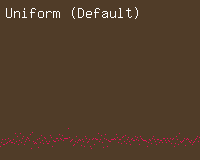
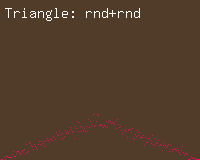
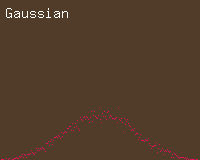
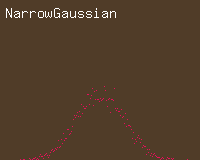
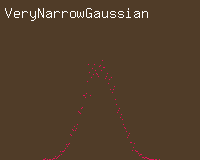
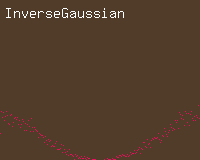
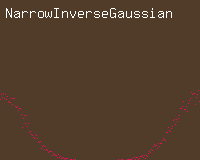
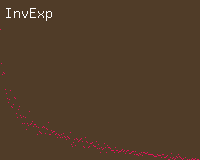
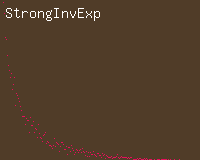
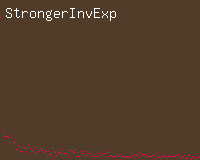
Translated to the Natfloat arguments the horizontal center point in these graphs denote the "avg" value, the width of the plot is determined by the "var" value. In json, the uniform distribution would be in the written as such: { avg: 100, var: 100, dist: "uniform" }
See also EvolvingNatFloat
| Code Modding | |
|---|---|
| Advanced | Server-Client Considerations • Setting up your Development Environment • Advanced Blocks • Advanced Items • Block and Item Interactions • Block Behavior • Block Entity • Particle Effects • World Access • Inventory Handling • Commands • GUIs • Network API • Monkey patching (Harmony) |
| Data Management | Savegame Data Storage • ModConfig File • Chunk Data Storage • TreeAttribute |
| Worldgen | WorldGen API • NatFloat • EvolvingNatFloat |
| Rendering | Shaders and Renderers |
Wondering where some links have gone?
The modding navbox is going through some changes! Check out Navigation Box Updates for more info and help finding specific pages.
| Modding | |
|---|---|
| Modding Introduction | Getting Started • Theme Pack |
| Content Modding | Content Mods • Developing a Content Mod • Basic Tutorials • Intermediate Tutorials • Advanced Tutorials • Content Mod Concepts |
| Code Modding | Code Mods • Setting up your Development Environment |
| Property Overview | Item • Entity • Block • Block Behaviors • Block Classes • Block Entities • Block Entity Behaviors • World properties |
| Workflows & Infrastructure | Modding Efficiency Tips • Mod-engine compatibility • Mod Extensibility • VS Engine |
| Additional Resources | Community Resources • Modding API Updates • Programming Languages • List of server commands • List of client commands • Client startup parameters • Server startup parameters Example Mods • API Docs • GitHub Repository |